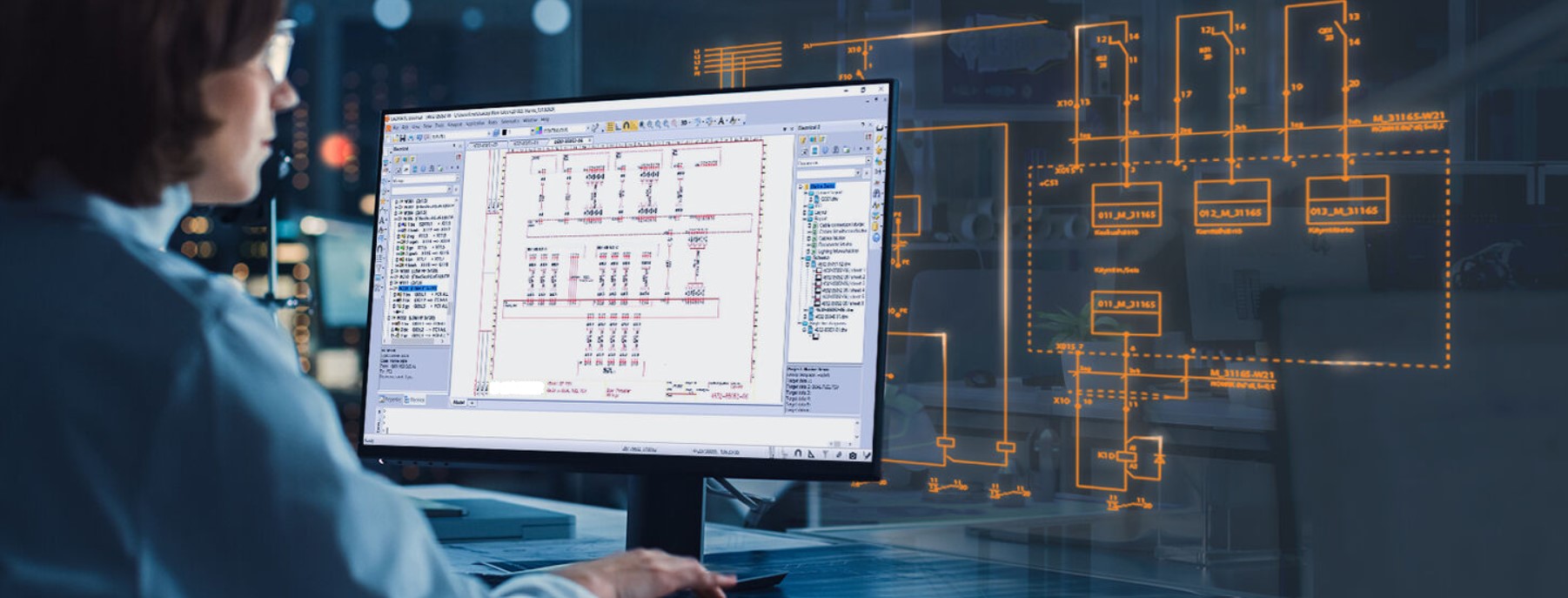Experienced Electrical Engineering Design Services Tailored to Specific Needs
Experienced Electrical Engineering Design Services Tailored to Specific Needs
Blog Article
Innovative Electrical Design Services for Modern Facilities
As city environments grow increasingly complex, integrating innovations such as smart grids and eco-friendly energy sources comes to be critical. These innovations not only guarantee to maximize energy consumption however additionally foster durability versus future demands.
Importance of Cutting-edge Electrical Design
Ingenious electrical design plays an important function in modern infrastructure, affecting not just effectiveness but also sustainability. As cities develop and the demand for energy rises, the need for advanced electrical systems becomes extremely important. These systems need to not only meet current demands however likewise prepare for future development and technological advancements.
A well-executed electric design can considerably reduce power intake, thereby lowering functional costs and decreasing environmental effect. By including renewable resource sources, such as photovoltaic panels and wind generators, innovative layouts can improve energy freedom and resilience. Additionally, smart grid modern technologies allow for real-time surveillance and administration of power distribution, optimizing efficiency and minimizing waste.
Safety and security is an additional crucial element of electrical design. Carrying out extensive standards and advanced modern technologies can reduce dangers linked with electrical failures, ensuring a protected atmosphere for organizations and homeowners alike. Additionally, ingenious styles promote adaptability, allowing infrastructures to integrate arising modern technologies perfectly.
Secret Fads in Electrical Design
As the landscape of electric design remains to develop, a number of key fads are forming the future of the industry. One significant fad is the integration of wise modern technology right into electric systems. The proliferation of the Internet of Things (IoT) has allowed real-time surveillance and control of electrical devices, boosting efficiency and promoting predictive upkeep.
Another fad is the expanding emphasis on modular design. This approach enables adaptable and scalable solutions, enabling framework to adjust to transforming requirements without substantial remodellings. Furthermore, making use of advanced simulation devices and Structure Info Modeling (BIM) is ending up being increasingly common, enhancing the design procedure and enhancing cooperation among stakeholders.
In addition, advancements in materials scientific research are resulting in the advancement of lighter, a lot more sturdy, and energy-efficient components. This development is specifically vital for high-performance buildings and infrastructure projects.
Last but not least, there is a significant change in the direction of data-driven decision-making - electrical load calculation. Leveraging information analytics assists designers maximize systems for performance and cost-effectiveness. Together, these trends symbolize a transformative era in electric design, boosting performance, sustainability, and durability in modern facilities
Sustainable Energy Solutions
Sustainable power services are significantly coming to be a critical emphasis in electrical design, mirroring a more comprehensive dedication to ecological responsibility and resource efficiency. These solutions intend to minimize ecological effect while enhancing energy usage in numerous infrastructures, from domestic buildings to large commercial facilities.
One of the leading techniques involves the combination of renewable resource sources, such as solar panels and wind turbines, into electrical systems. This not only reduces reliance on fossil fuels but also enhances energy strength. Furthermore, cutting-edge energy storage systems, such as sophisticated batteries, allow reliable monitoring and circulation of energy, making certain that excess power generated during top production can be made use of during high demand periods.
Additionally, energy-efficient design practices are being embraced to boost overall system performance. This includes utilizing energy-efficient lights, a/c systems, and wise structure modern technologies that monitor and adjust power use based on occupancy and ecological conditions.
Smart Grid Technologies
The execution of sustainable power options naturally brings about the exploration of smart grid innovations, which play a crucial function in updating electrical systems. Smart grids utilize advanced communication technologies and data analytics to boost the reliability, efficiency, and sustainability of electrical energy distribution. By integrating digital modern technology with typical grid framework, these systems promote real-time tracking, automated control, and boosted decision-making capacities.
One of the vital attributes of wise grids is their ability to fit renewable resource sources, such as solar and wind go to the website power. This flexibility not only lowers reliance on fossil gas however also enables for a much more decentralized power production version. Moreover, clever grids allow need response programs, where consumers can adjust their energy usage based upon real-time prices, thus advertising power preservation and decreasing peak load demands.
Additionally, smart grid modern technologies boost grid durability by making it possible for quicker recognition and resolution of blackouts, ultimately reducing downtime. With predictive maintenance and analytics, utilities can enhance and enhance operations solution shipment. As cities and neighborhoods proceed to evolve, clever grid technologies are vital for developing a reliable and sustainable electrical infrastructure that satisfies the needs of contemporary culture.

Future-Proofing Framework
To make certain lasting stability and adaptability, future-proofing facilities is essential in the quickly advancing landscape of electrical design services. As technology advancements and power needs shift, it is vital that electric systems are created with adaptability in mind. This entails including scalable options that can accommodate future upgrades without demanding extensive overhauls.

Additionally, sustainability needs to be a cornerstone of future-proofed designs. Making use of renewable resource resources, such as solar and wind, and optimizing power effectiveness lower reliance on nonrenewable fuel sources, lining up with global initiatives to fight climate change.
Conclusion
In conclusion, ingenious electric design solutions play an essential role in shaping modern-day facilities. By focusing on flexibility, effectiveness, and sustainability, these solutions address the progressing needs of power systems. The combination of smart grid technologies and lasting power solutions improves resilience and reduces functional expenses. Future-proofing infrastructure with advanced simulation tools and modular strategies makes certain that electric systems continue to be responsive to transforming requirements, eventually adding to an extra energy-independent and sustainable future.
A well-executed electrical design can dramatically minimize energy consumption, thereby reducing operational expenses and reducing environmental influence. By incorporating eco-friendly energy resources, such as solar panels and wind turbines, innovative layouts can improve power freedom and strength. Furthermore, cutting-edge power storage systems, such as innovative batteries, allow reliable monitoring useful site and distribution of energy, making certain that excess power generated throughout top manufacturing can be used during high demand durations.
Smart grids make it possible for need reaction programs, where consumers can adjust their power use based on real-time pricing, therefore promoting power conservation and reducing peak lots demands. (industrial electrical design)
As technology breakthroughs and energy needs shift, it is essential that electric systems are designed with versatility in mind.
Report this page